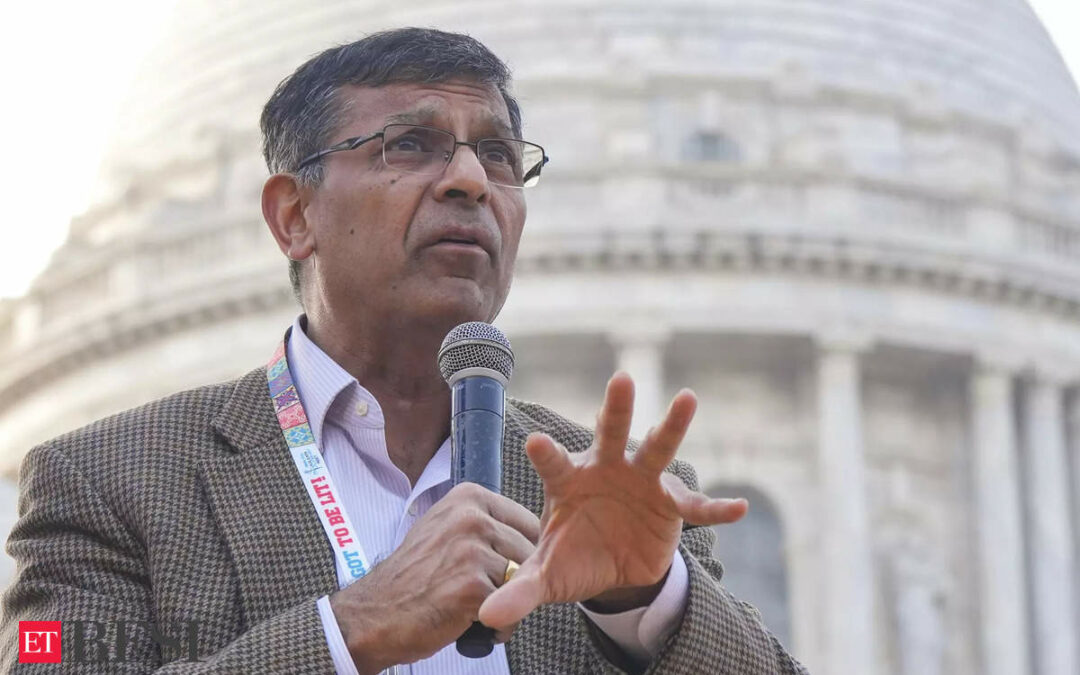Amid rising debate over how to handle India’s persistent food inflation, Raghuram Rajan, former Reserve Bank of India (RBI) Governor, has cautioned against excluding food prices from inflation calculations. As inflation remains a key concern for the central bank, Rajan’s stance is that removing food inflation from headline inflation targets could erode public’s ‘great faith’ in the central bank’s ability to manage the broader economic picture.
“So, if you leave out some of the most important parts of inflation and tell them, inflation is under control, but food prices are going through the roof… they would not have great faith in the Reserve Bank,” Rajan told PTI in an inerview.
Food prices have always played a significant role in shaping India’s inflation picture. The current consumer price inflation (CPI) basket assigns a weight of 46% to food, a figure that many argue needs to be revisited as consumption patterns evolve. Nevertheless, Rajan maintains that food prices cannot be dismissed, as they constitute a significant portion of household spending and influence how the general public perceives inflation.
Also Read: There’s too much food on table to make Indians and RBI worry
In the Economic Survey 2023-24, India’s Chief Economic Advisor V Anantha Nageswaran advocated for excluding food inflation when setting benchmark interest rates. Nageswaran’s argument is that monetary policy has limited influence over food prices, which are largely dictated by supply-side factors.
The case against excluding food prices
Rajan firmly rebutted these suggestions, stating that targeting a comprehensive basket of goods, which includes food prices, is essential for maintaining accurate inflation expectations among consumers. He said that while central banks might have limited control over short-term food prices, sustained high food inflation signals broader economic issues.
“You cannot affect food prices in the short run, but if food prices stay high for a long time, that does imply there are constraints on producing food relative to the demand,” Rajan told PTI, adding that central banks can address inflation in other areas to balance these pressures.
“When I came into office, we were still targeting PPI (producer price index). Now that has no bearing on what the average consumer faces. So, when the RBI says inflation is low, look at PPI, but if the consumer is facing something very different, then they do not really believe that inflation is down,” Rajan said, underlining how disconnection between official inflation data and real-world experiences can erode public trust.
Food price pressures continue to weigh on India
India’s persistent food inflation remains a challenge despite efforts by the government and the RBI. In the most recent monetary policy review in August, the RBI acknowledged that food inflation pressures cannot be ignored. While inflation in other sectors is more controlled, food prices have remained elevated, with staples like vegetables and pulses contributing significantly to the overall rise.
The Indian government has implemented various measures to combat high food inflation, including selling vegetables and pulses at reduced prices, imposing stock limits, and restricting exports. These interventions aim to stabilize food prices while protecting both consumers and farmers. However, striking a balance between keeping prices affordable for the public and ensuring farmers’ livelihoods is an ongoing challenge.
A government panel is currently considering reducing the weight of food in the CPI basket by up to 8 percentage points. At present, the food and beverage category accounts for over 54% of the CPI basket, a figure based on outdated consumer spending data from 2011-2012. Many economists argue that these patterns no longer reflect the current consumption landscape, skewing the inflation data used by the RBI to set interest rates.
India’s inflation-targeting framework, introduced in 2016, requires the RBI to maintain retail inflation at 4%, with a 2% margin on either side. This mandate is primarily based on CPI movements, which include food, fuel, manufactured goods, and select services.
RBI Governor Shaktikanta Das has also voiced concerns about ignoring food inflation, noting that “with this high share of food in the consumption basket, food inflation pressures cannot be ignored.” Das had said the general public perceives inflation mainly through the lens of rising food prices, and as such, India cannot afford to overlook this critical component of the inflation basket.
Unlike developed nations, where food accounts for a smaller portion of household budgets, food prices in India weigh heavily on consumers, making inflation targeting more complex. In countries like the U.S. or Germany, food’s share in the CPI is relatively low, making inflation easier to manage through monetary policy. However, in India, where food demand is price inelastic, any spikes in food prices can significantly affect overall inflation.
While some economists argue for excluding food prices from inflation targeting, Raghuram Rajan and others maintain that this would not be a practical solution for India. Instead, the RBI must continue to balance core and food inflation trends while considering their impact on the overall CPI. Seasonal fluctuations in food prices, such as temporary spikes in vegetable costs, can be overlooked, but longer-term food inflation must be managed to maintain public trust in the central bank.










